
You hear the soft thud of a package at your door. For a moment, you feel a spark of excitement. Then, a wave of confusion. What did you order? As you open the box, a vague memory returns—a late-night scroll, a targeted ad, a seamless one-click purchase. The item is fine, but the satisfaction is fleeting, replaced by a nagging sense of regret, not just for the money spent, but for the mindless way it happened.
If this scenario feels familiar, you are not alone. In our hyper-connected world, online shopping has evolved from a convenience into a constant, ambient presence. It’s the pop-up ad on a news site, the swipe-up link in a social media story, the personalized email announcing a flash sale just for you. The digital marketplace is designed to be frictionless, fast, and endlessly tempting.
The cost of this constant temptation isn’t just financial. It’s a tax on our most valuable resource: our attention. Every notification, every targeted ad, and every endless scroll pulls us away from the present moment, fragmenting our focus and draining our mental energy. The result is often a cycle of impulse buying that leaves us feeling more cluttered and less fulfilled.
But what if there was a different way? What if you could engage with online shopping on your own terms? This guide isn’t about advocating for a total digital detox or quitting online retail forever. That’s an unrealistic and often unhelpful goal. Instead, this is about building realistic boundaries and cultivating a more conscious approach. It’s about transforming your relationship with technology from a reactive, compulsive one to a deliberate, intentional one.
Welcome to the practice of mindful online shopping. Here, we will explore the subtle psychological mechanisms that platforms use to capture your attention, and we’ll provide you with practical, actionable strategies to reclaim it. You’ll learn how to set up your digital and physical environments to support your goals, handle common triggers, and ultimately, curb impulse buys online. This is your path to making purchases that truly add value to your life, leaving behind the cycle of distraction and regret.
📚 Table of Contents
- The Invisible Architecture of Impulse: How Online Shopping Captures Your Attention
- Building Your Digital Fortress: Practical Routines for Mindful Shopping
- Curating Your Phone for Calm and Focus
- The Art of the Intentional Home Screen
- Using Technology Against Itself: App Timers
- Designing Your Physical Environment for Digital Wellness
- Creating Sacred Screen-Free Zones
- Engineering a Sleep-Friendly Evening
- Cues for Deep Work and Deep Rest
- Mindful Shopping in Action: Two Worked Examples
- Navigating the Real World: Troubleshooting Common Challenges
- When You “Relapse”: Handling Moments of Impulse
- The Fear of Missing Out (FOMO) and “Limited Time” Offers
- Managing Social and Peer Expectations
- Frequently Asked Questions About Mindful Online Shopping
- How does mindful shopping affect my data privacy?
- I work night shifts. How can I adapt these sleep tips?
- How can I apply these principles as a parent managing online shopping for my family?
- My job requires me to be online and responsive. How can I set boundaries?
- Your First Steps Toward a More Intentional Digital Life

The Invisible Architecture of Impulse: How Online Shopping Captures Your Attention
To change our habits, we first need to understand the forces shaping them. Modern e-commerce isn’t just a digital catalog; it’s a sophisticated ecosystem engineered to hold your gaze and encourage immediate action. Understanding its design is the first step toward navigating it with intention.
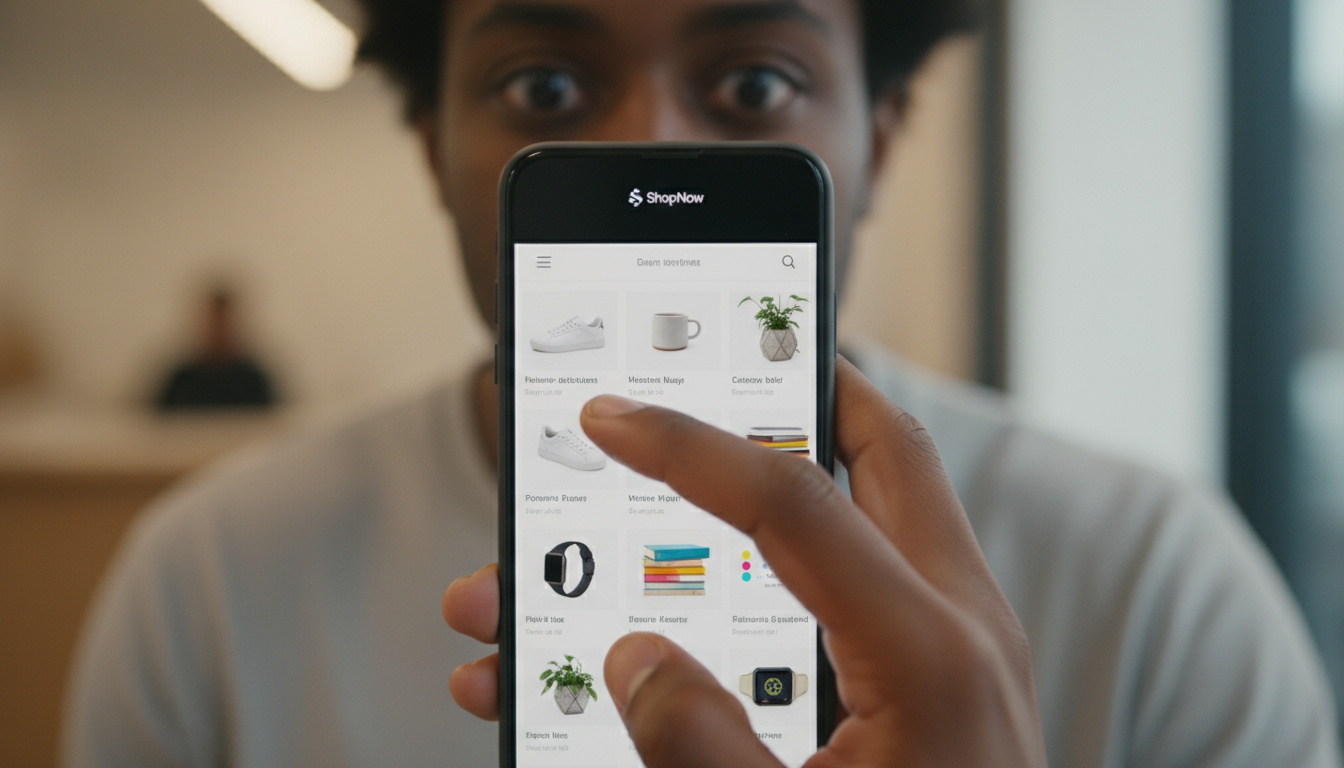
The Psychology of the Scroll
Think about the last time you browsed a social media feed or a large online marketplace. Did you ever reach a definitive “end”? Probably not. This feature is known as the infinite scroll, and it’s a powerful tool for keeping you engaged. By eliminating natural stopping points—like turning the page of a catalog—it encourages a passive, almost hypnotic state of consumption. Your brain is never given a clear signal to stop and evaluate.
This design masterfully taps into what psychologists call a dopamine loop. Dopamine is a neurotransmitter associated with pleasure and reward. The loop works like this: a trigger (a notification for a sale) prompts an action (opening the app and scrolling), which leads to a variable reward (discovering an interesting product or a great deal). The “variable” part is key; because you never know when you’ll find something great, your brain releases a little bit of dopamine in anticipation, compelling you to keep scrolling. It’s the same mechanism that makes slot machines so addictive. For more on the fundamentals of behavioral psychology, the American Psychological Association (APA) is an excellent resource.

Frictionless, By Design
Have you ever noticed how astonishingly easy it is to buy something online? With features like one-click checkout, saved credit card information, and express payment options, the entire process can take seconds. This is intentional. Designers and marketers refer to any step that makes you pause and think as “friction.” Their goal is to remove as much friction as possible between the moment you feel a desire and the moment you complete a purchase.
Services like “buy now, pay later” take this even further, removing the immediate financial friction. By breaking a purchase down into smaller, interest-free installments, the psychological weight of the price is reduced, making it easier to justify the buy in the moment. When you’re trying to curb impulse buys online, this frictionless environment is your biggest adversary. It’s built to bypass the rational, deliberative part of your brain.

Personalization and the Echo Chamber
Online retailers collect vast amounts of data on your behavior: what you click on, how long you look at a product, what you add to your cart, and what you ultimately buy. They use this data to power sophisticated algorithms that create a highly personalized shopping experience. The ads you see, the products recommended on the homepage, and the marketing emails you receive are all tailored specifically to you.
While this can be helpful, it also creates a powerful echo chamber. The algorithm shows you more of what it thinks you want, reinforcing existing desires and creating new ones. This is amplified by retargeting ads—the ones that seem to follow you across the internet, reminding you of that pair of shoes you looked at last week. This creates a false sense of urgency and ubiquity, making an impulse feel more like a destiny. A core part of mindful shopping is recognizing that this personalized world is a constructed one, designed to keep you engaged and spending.

Building Your Digital Fortress: Practical Routines for Mindful Shopping
Awareness is the first step, but action is what creates change. You don’t need to be a tech expert to modify your digital environment. With a few intentional tweaks to your devices and routines, you can create a space that encourages focus and discourages mindless consumption. Think of it as digital interior design, where the goal is calm, not clutter.
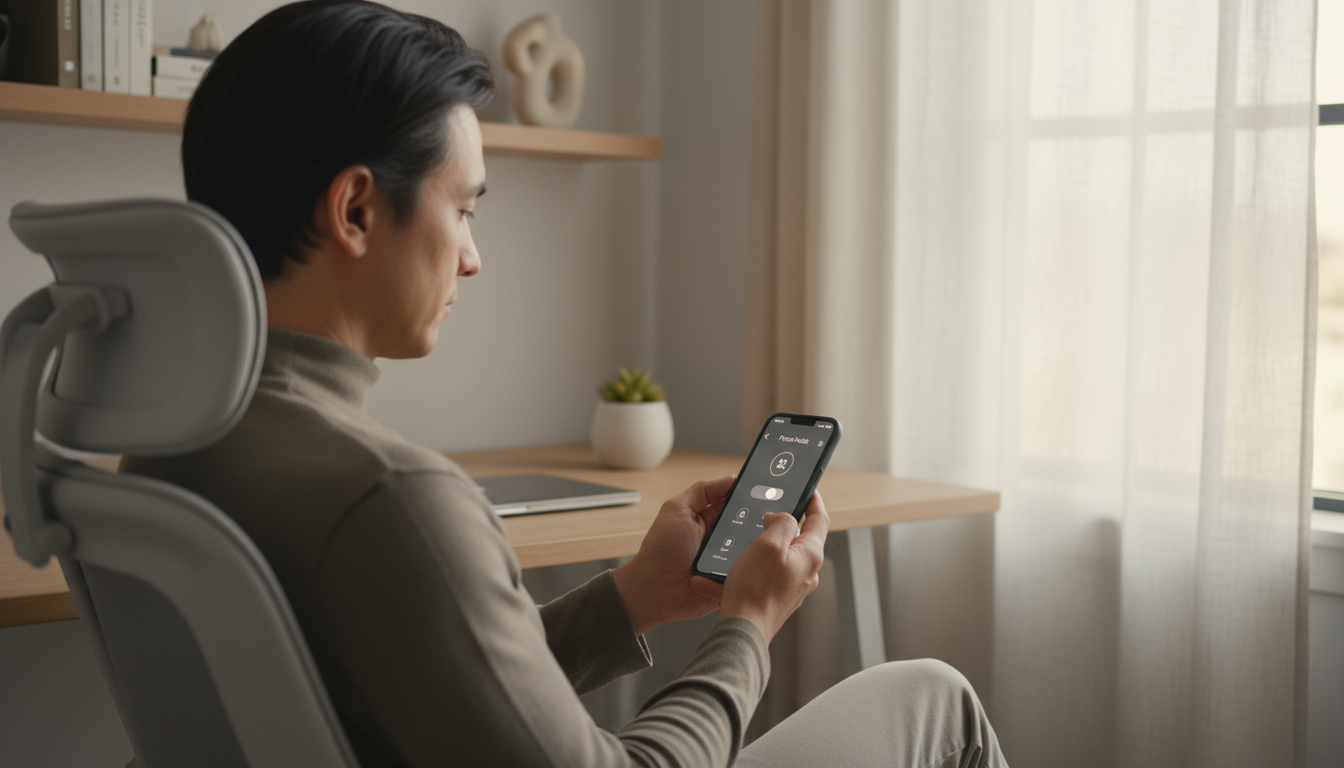
Curating Your Phone for Calm and Focus
Your smartphone is likely the primary gateway to impulse shopping. Taming it is essential. Most modern phones have a “Focus Mode” or similar feature that allows you to control which apps and notifications can reach you at certain times. Set up a “Work Focus” that blocks all shopping apps and websites from 9 AM to 5 PM. Create a “Wind-Down Focus” that activates in the evening, silencing retail notifications and hiding tempting apps from your screen.
This leads to the crucial practice of notification triage. Most notifications are not urgent; they are designed to pull you back into an app. Go into your phone’s settings and turn off all notifications from shopping apps. You don’t need to know the second a flash sale starts. For other apps, consider the practice of notification batching. This means turning off instant alerts and instead scheduling a few specific times per day—say, noon and 4 PM—to check your notifications all at once. This puts you in control of your attention, rather than letting your phone dictate your focus.

The Art of the Intentional Home Screen
Your home screen is prime real estate. If a shopping app is sitting there, easily accessible, you are far more likely to tap it out of boredom or habit. The solution is simple: move them. Create a folder named “Shopping” or something even more neutral like “Utilities” and move all retail apps into it. Then, move that folder to your second or third home screen.
This small act introduces a healthy amount of friction. To go shopping, you now have to consciously swipe, find the folder, and then find the app. That brief, two-second delay is often enough for your prefrontal cortex to catch up and ask, “Do I really need to be doing this right now?” You’re making it easier to do what you intend to do (like listen to a podcast or check the weather) and harder to do what you do out of habit.
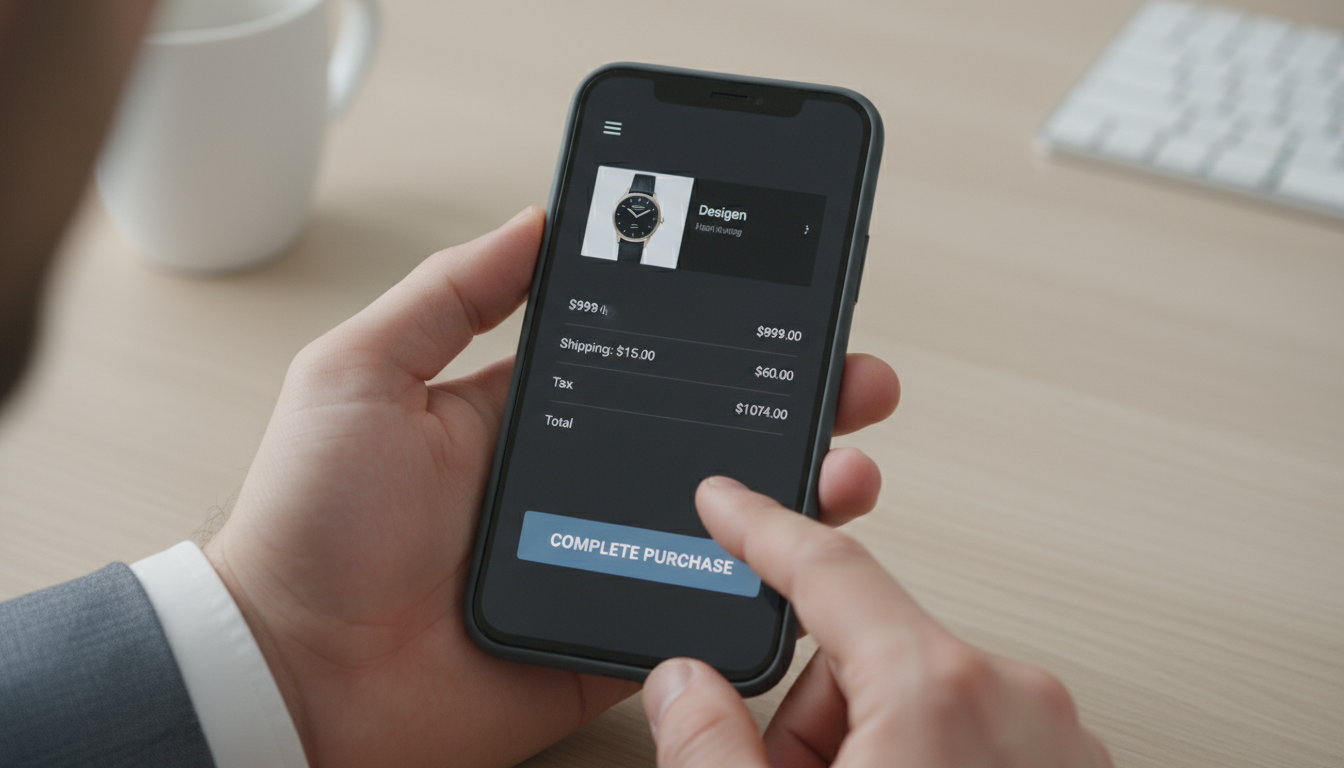
Using Technology Against Itself: App Timers
Another powerful tool built into most smartphones is the ability to set daily time limits for specific apps. You can set a 15-minute daily limit on Amazon, Instagram, or any other app that leads you down a rabbit hole of browsing and buying. This isn’t meant to be a punishment. It’s a tool for building awareness.
When the timer notification appears, it serves as a gentle, non-judgmental interruption. It’s a moment to pause and ask yourself, “Is this how I want to be spending my time? Have I accomplished what I came here to do?” Often, the answer is no, and the alert is the perfect cue to close the app and redirect your attention to something more meaningful. This practice helps you align your digital behavior with your real-world intentions, which is the essence of mindful shopping.

Designing Your Physical Environment for Digital Wellness
Your digital habits are deeply intertwined with your physical surroundings. The layout of your home, the placement of your devices, and the environment you create for work and rest can either encourage distraction or foster focus. By making a few simple changes to your physical world, you can create powerful, lasting support for your mindful online shopping goals.

Creating Sacred Screen-Free Zones
One of the most effective strategies for curbing mindless tech use is to designate specific areas of your home as screen-free zones. The two most important candidates are the dinner table and the bedroom. When you bring a phone to the dinner table, you sacrifice connection and presence for the possibility of a notification. When you bring it into the bedroom, you invite a world of endless distraction into your space for rest and intimacy.
Make a clear rule: no phones, tablets, or laptops in these areas. This isn’t just about avoiding late-night shopping; it’s about reclaiming these spaces for their intended purpose. Your bedroom should be a sanctuary for sleep, and your dining area a place for nourishment and conversation. Physically separating your devices from these core human activities creates a powerful boundary that your brain will quickly learn to respect.

Engineering a Sleep-Friendly Evening
The hours before bed are a particularly vulnerable time for impulse buying. Your willpower is depleted after a long day, and the calming, blue-toned light from your screens can trick your brain into staying awake. This is caused by blue light, a high-energy wavelength of light emitted by most digital displays. It can suppress the production of melatonin, the hormone your body produces to regulate sleep.
To combat this, create a “digital sunset” for yourself. Commit to putting all screens away at least 60 to 90 minutes before you intend to sleep. Charge your phone in another room, like the kitchen or living room, not on your nightstand. This simple act achieves two critical goals: it protects your sleep quality and it eliminates the temptation for that “one last scroll” that can easily turn into an unplanned purchase. For more expert information on sleep hygiene, the Sleep Foundation provides comprehensive, evidence-based guidance.

Cues for Deep Work and Deep Rest
Your environment is filled with cues that trigger certain behaviors. If your laptop is always open on the coffee table, you’re cued to browse. If your phone is always in your pocket, you’re cued to check it. You can consciously design these cues to support your goals. When it’s time for deep work, put your phone in a drawer or another room. This physical separation is a strong cue to your brain that it’s time to focus.
Conversely, create cues for rest and relaxation. Leave a physical book on your nightstand. Place a yoga mat in a visible corner of your living room. Put a journal and a pen on the arm of your favorite chair. By making analog activities more visible and accessible than digital ones, you make it easier to choose them. You are no longer relying solely on willpower; you are letting your environment guide you toward healthier, more mindful habits.
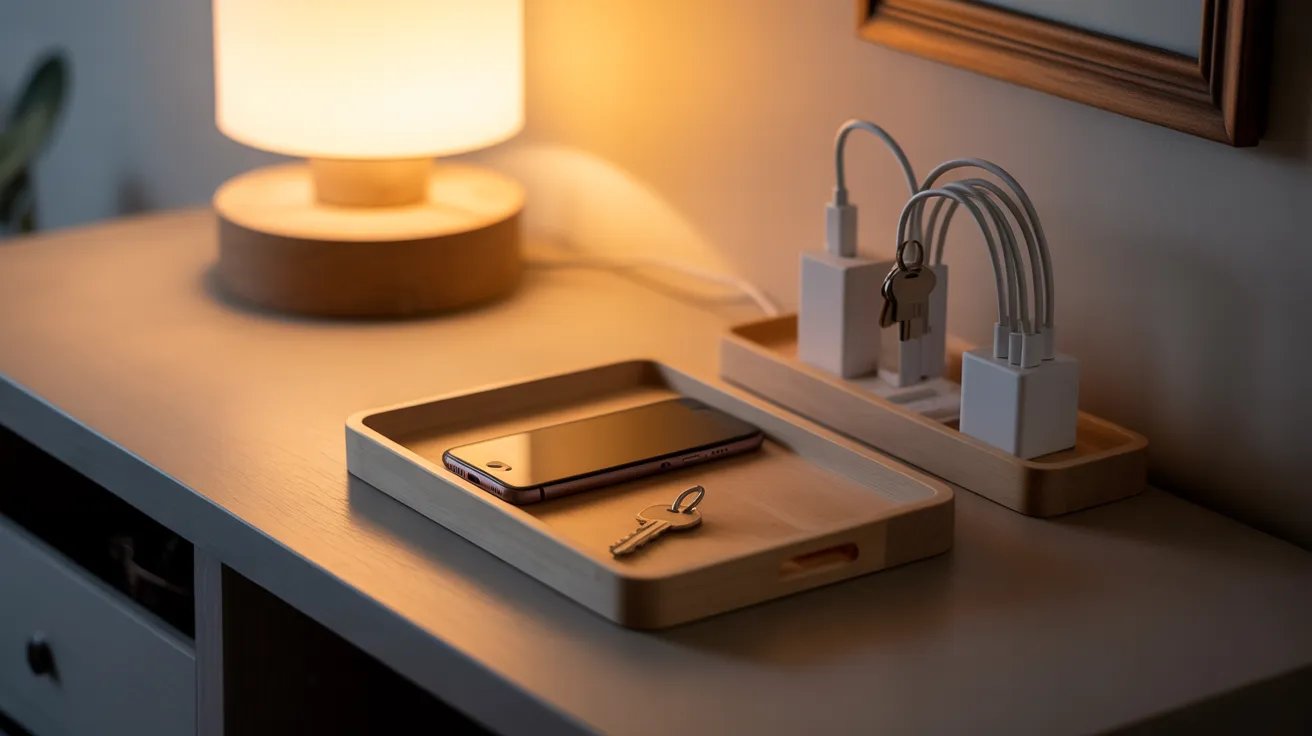
Mindful Shopping in Action: Two Worked Examples
Understanding the principles of mindful technology use is one thing; putting them into practice is another. The abstract can be hard to implement, so let’s walk through two concrete, practical examples of how you can integrate these ideas into your daily and weekly routines. These aren’t rigid prescriptions, but templates you can adapt to fit your own life.

Example 1: The 10-Minute Mindful Wind-Down
The goal of this routine is to replace an evening of screen-based consumption with intentional, calming activities that prepare you for a restful night’s sleep. This happens in the 60 minutes before bed, after you’ve initiated your “digital sunset.”
First, plug your phone in to charge—somewhere outside of your bedroom. This is non-negotiable. For the next 10 minutes, engage in a simple act of “closing down” your physical space. This could be tidying the kitchen counter, packing your bag for the next day, or folding a small pile of laundry. This physical action helps transition your mind away from the day’s chaos.
Next, for 20 minutes, choose a purely analog activity. Read a few pages of a physical book or magazine. Do some light stretching. Listen to a calming playlist or a podcast without looking at the screen. The key is to engage your senses in a way that doesn’t involve a bright display.
For the final 10 minutes, engage in quiet reflection. You might write a few lines in a journal about your day, practice some simple breathing exercises, or just sit quietly. Notice the feeling in the room. Notice the absence of digital pings and alerts. This routine not only improves sleep but also starves the impulse-shopping habit of its prime-time slot: late-night, low-willpower browsing.
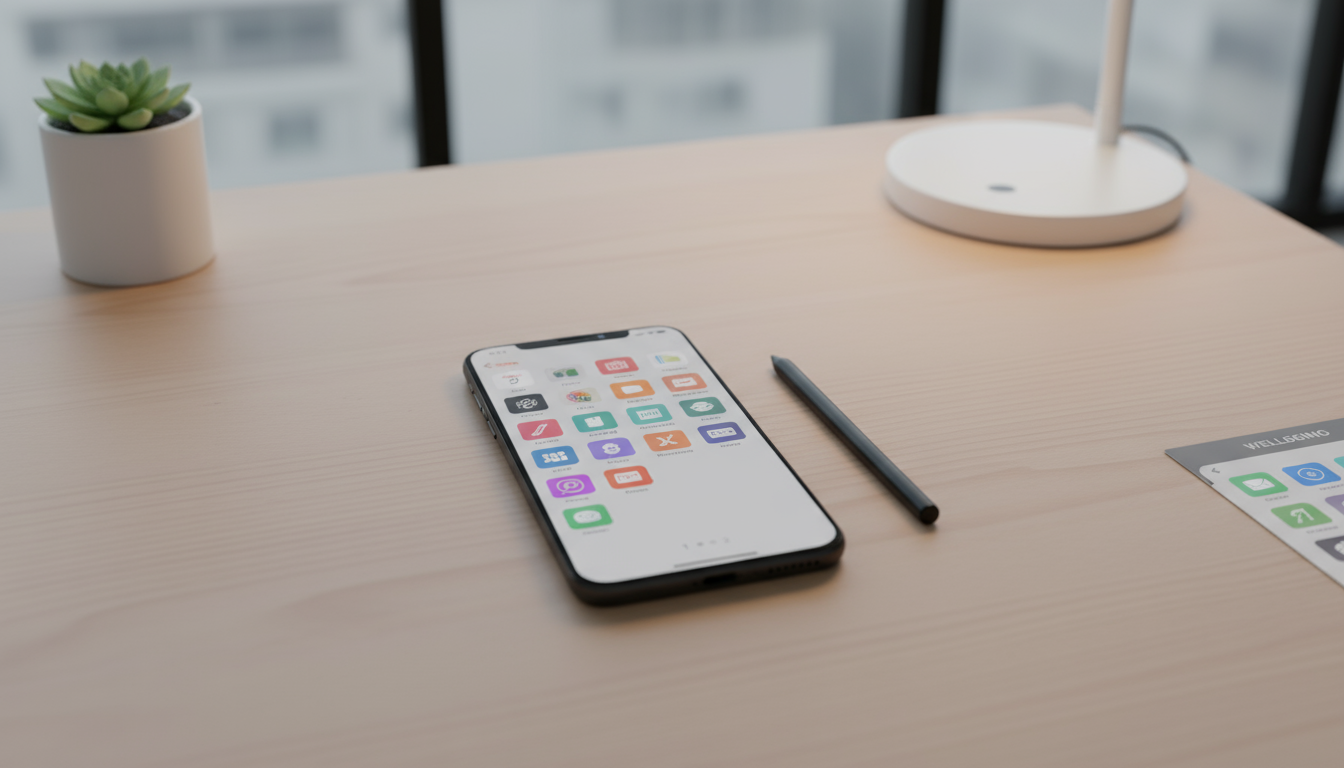
Example 2: A Realistic Weekend Digital Detox
A “digital detox” doesn’t have to mean disappearing into the woods for 48 hours. A realistic detox is about changing your mode of engagement with technology, shifting from passive consumption to intentional use.
On Saturday morning, if there is online research or shopping you truly need to do, schedule it. Put it in your calendar like an appointment: “10:00 AM – 10:30 AM: Research new running shoes.” During that time, you are focused on that single task. When the time is up, close the tabs and move on. This prevents a targeted task from bleeding into hours of mindless browsing.
For Saturday afternoon, plan an activity where you physically leave your phone at home. Go for a walk in a park, visit a local coffee shop with a friend, or go to the grocery store. You’ll be surprised at how your senses heighten when you’re not constantly tethered to your device. You’ll also realize that you can navigate short periods of your life perfectly well without it.
On Sunday, try a “tools, not toys” approach. Use your phone only for its core utility functions: making calls, sending essential text messages, using maps for navigation, or playing music. Stay off social media, news feeds, and all shopping apps. To help with this, use your phone’s Do Not Disturb (DND) mode. This is a setting that silences all incoming calls, texts, and notifications, allowing you to use the phone as a tool without it constantly demanding your attention. This practice resets your brain’s expectation of what a phone is for, reinforcing its role as a servant, not a master.

Navigating the Real World: Troubleshooting Common Challenges
Building new habits is a journey, not a destination. There will be moments of difficulty, and setbacks are a natural part of the process. The key is to anticipate these challenges and have a plan for how to navigate them with self-compassion and resilience. Perfection is not the goal; progress is.
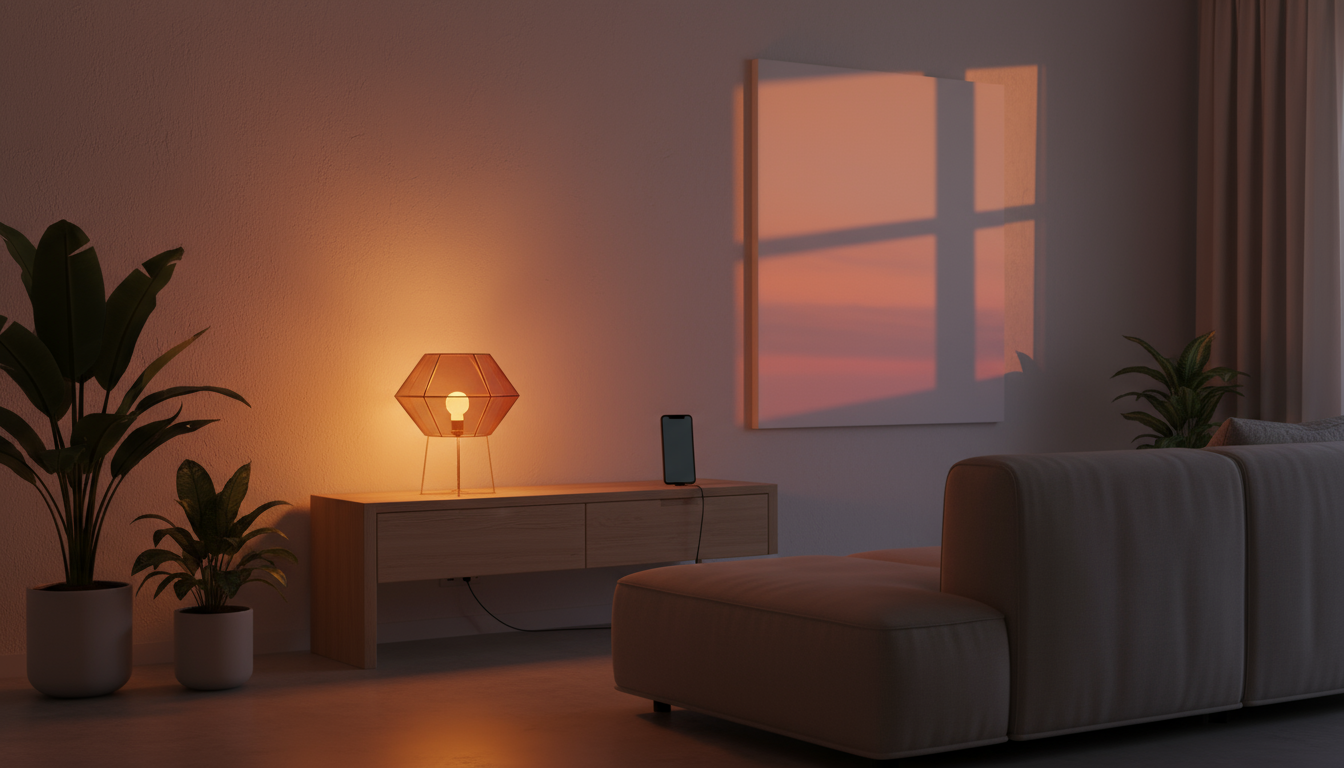
When You “Relapse”: Handling Moments of Impulse
So, you made an impulse purchase. You were feeling stressed or bored, you scrolled for a few minutes, and before you knew it, a confirmation email was in your inbox. The first step is crucial: do not treat this as a failure. It’s a data point. It’s an opportunity to learn.
Instead of judging yourself, get curious. Ask: What was the trigger? Was I feeling a particular emotion? Was it a specific time of day? Was I in a certain place? Understanding the context of the impulse is the key to managing it better next time. Remember, a single unplanned purchase does not erase all the progress you’ve made. The goal of mindful online shopping is not to be a perfect consumer, but a more conscious one.
A powerful preventative strategy is the “24-Hour Rule.” If you feel a strong urge to buy something non-essential, add it to your cart or a wish list, and then close the browser tab. Commit to waiting a full 24 hours before you can make the purchase. More often than not, when you return to it a day later, the urgency and emotional charge will have faded, allowing you to make a more rational decision.

The Fear of Missing Out (FOMO) and “Limited Time” Offers
Marketers are experts at leveraging the Fear of Missing Out (FOMO). Phrases like “Limited time only,” “24-hour flash sale,” and “Almost sold out!” are designed to create a sense of urgency and scarcity. This triggers the primitive part of our brain that fears loss, compelling us to act now and think later.
The antidote to this is perspective. Remind yourself that these tactics are intentionally designed to short-circuit your rational thinking. The truth is, there will almost always be another sale. The item will likely be available tomorrow, next week, or next month. The scarcity is often manufactured. When you see a countdown timer or a low-stock warning, take a deep breath. Recognize it for what it is: a marketing tactic, not a genuine emergency. This awareness can defuse its power over you.

Managing Social and Peer Expectations
Sometimes the pressure to shop comes from our social circles. A friend sends a link to a sale, a group chat is buzzing about a new product, or your social media feed is full of influencers showcasing their latest hauls. It can feel difficult to opt-out without seeming judgmental or disconnected.
The solution lies in setting gentle, clear boundaries. You don’t need to announce a boycott of consumerism. Instead, you can use simple, polite scripts. If a friend sends you a link, you can respond with, “That’s really cool, thanks for sharing! I’m trying to be more intentional with my spending right now, so I’m holding off on new purchases.” This communicates your position without passing judgment on theirs. It’s about owning your choices and priorities, which is the foundation of a mindful and intentional life.

Frequently Asked Questions About Mindful Online Shopping
Adopting new digital habits can bring up specific questions related to your unique lifestyle and circumstances. Here are answers to some common queries about putting mindful online shopping into practice.
How does mindful shopping affect my data privacy?
While mindful shopping is primarily a behavioral strategy, it has positive side effects for your digital privacy. The less time you spend browsing retail sites, clicking on ads, and making purchases, the less data you are generating for companies to collect. Every click you don’t make is a data point you don’t provide. This reduces your digital footprint and makes you a less detailed target for advertisers. While this isn’t a substitute for technical privacy tools like ad blockers or VPNs, it’s a powerful, foundational layer of privacy protection that comes from conscious behavior change.
I work night shifts. How can I adapt these sleep tips?
The principles of good sleep hygiene are universal, even if your schedule isn’t. The key is consistency. If you work at night and sleep during the day, your “digital sunset” should occur in the morning, about 60-90 minutes before your intended bedtime. It’s crucial to create an environment that signals to your body that it’s time to rest. Use blackout curtains to block out daylight, keep your bedroom cool and quiet, and put your phone on Do Not Disturb mode. The goal remains the same: to create a screen-free sanctuary for sleep, regardless of what time the clock says. For trusted, general information on health and wellness, the National Institutes of Health (NIH) offers a wealth of resources.
How can I apply these principles as a parent managing online shopping for my family?
Mindful shopping is an excellent value to model for children. Instead of making purchases in secret, involve your kids in the process. When they need something, create a list together and discuss needs versus wants. Talk openly about your family budget. When you decide not to buy something, explain your reasoning: “We’re going to wait on that because it’s not in our budget this month,” or “Let’s think about it for a week and see if we still feel it’s a priority.” Use parental controls on family devices not just to block inappropriate content, but to set time limits on shopping apps and websites, reinforcing the idea that browsing is a time-bound activity.
My job requires me to be online and responsive. How can I set boundaries?
For many, work is the biggest source of digital tethering. The key is to create clear separations between your professional and personal digital lives. If possible, use separate devices for work and personal use. If not, create separate user profiles or browser profiles (e.g., a “Work” profile in Chrome and a “Personal” one). During your personal time, log out of work accounts. Use your phone’s Focus Modes strategically, allowing notifications from work apps like Slack or Outlook only during your designated work hours. Communicate your boundaries to your colleagues: “I check and respond to emails between 9 AM and 5 PM.” Protecting your off-hours from the creep of work is essential for preventing the burnout that often leads to mindless “retail therapy.”
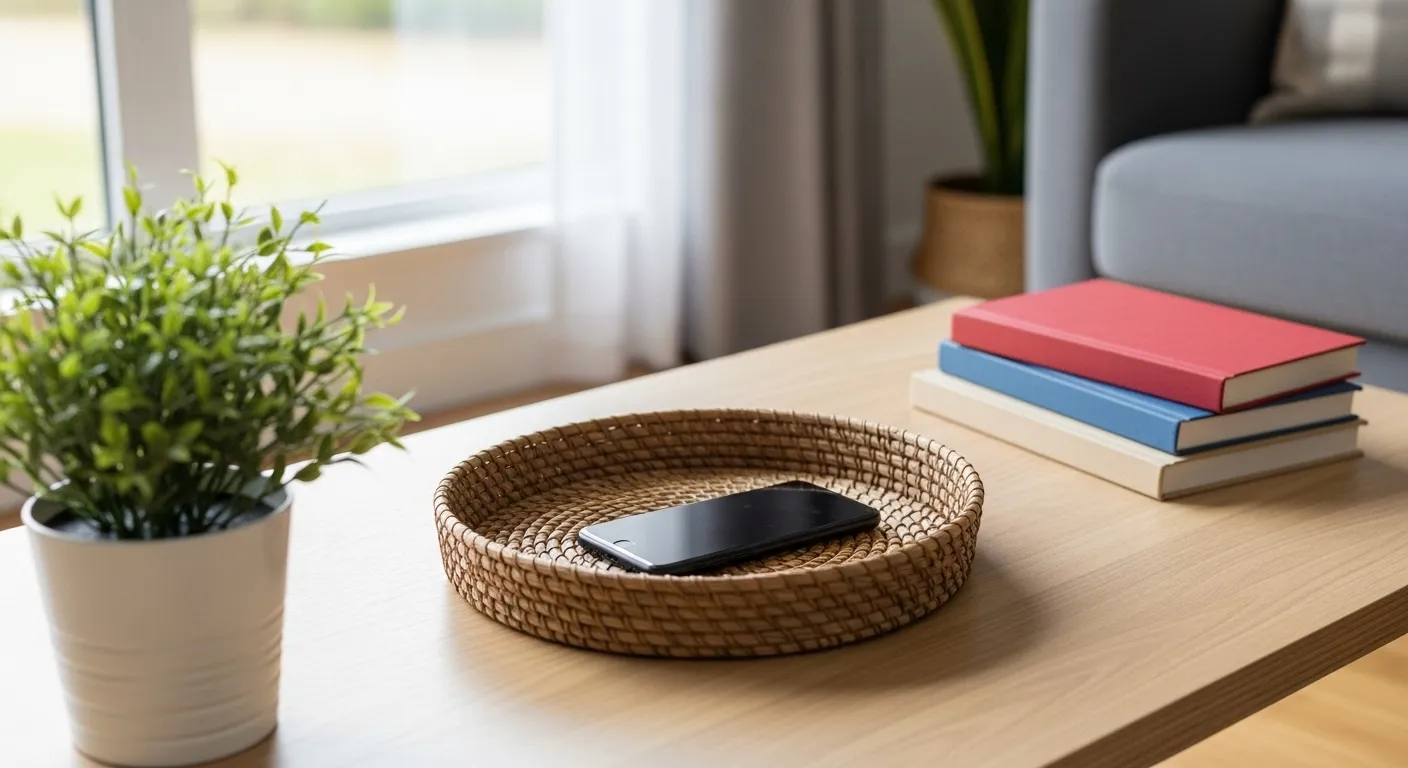
Your First Steps Toward a More Intentional Digital Life
We have journeyed through the psychology of digital distraction, explored practical strategies for our devices and our homes, and troubleshot the real-world challenges that arise. The path to a more mindful online shopping experience is not about rigid rules or self-deprivation. It is about empowerment. It is about shifting from being a passive target for algorithms to an active, conscious director of your own attention and resources.
This is about ensuring your digital actions, and the purchases that result from them, are in true alignment with your values and goals. It’s about finding the quiet satisfaction that comes from a deliberate choice, rather than the fleeting high of an impulse.
The journey of a thousand miles begins with a single step. You don’t need to implement every strategy in this guide overnight. The most sustainable change comes from small, consistent actions. Here is a short list of simple changes you can make this week to begin your practice:
— Move One App. Find the shopping app you use most often. Right now, move it off your main home screen and into a folder on a different screen. Notice the tiny pause this creates the next time you go to open it.
— Unsubscribe from Three. Open your email inbox and find marketing emails from three retailers that you frequently buy from on impulse. Scroll to the bottom and click “unsubscribe.” You control what enters your digital space.
— Implement the 24-Hour Rule Once. The very next time you feel the urge to buy something you don’t strictly need, add it to your cart, and then close the tab. Set a reminder on your phone to check it again in 24 hours. See how you feel then.
By taking these small steps, you begin to rewrite the script. You start building the muscle of intention. Every conscious choice, no matter how small, is a victory for your focus and a step toward a more balanced, fulfilling relationship with technology. You have the power to curb impulse buys online and build a more mindful shopping life, starting today.
Disclaimer: The information provided in this article is for informational purposes only and is not intended as a substitute for professional medical, psychological, or financial advice. Always seek the guidance of a qualified professional with any questions you may have regarding a medical or mental health condition or financial concerns.






